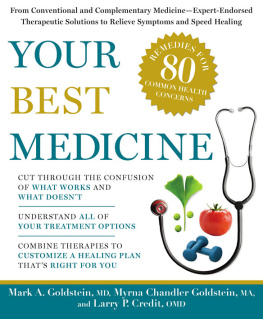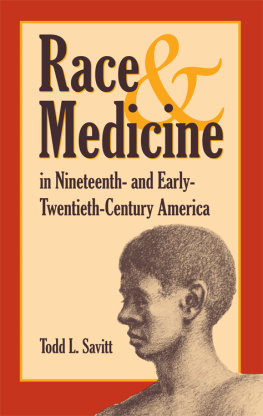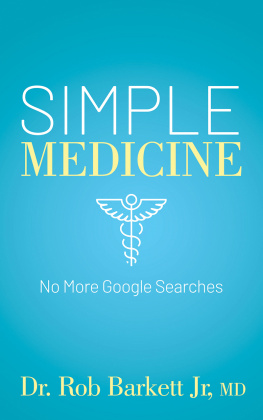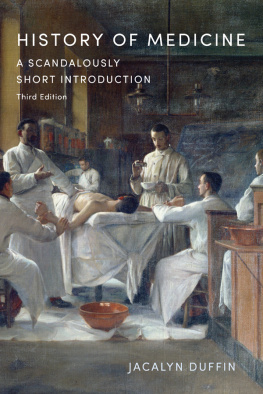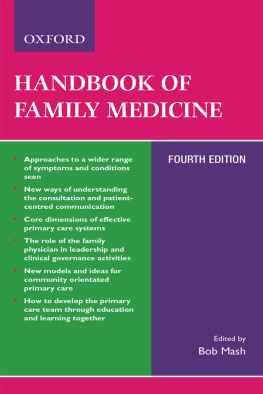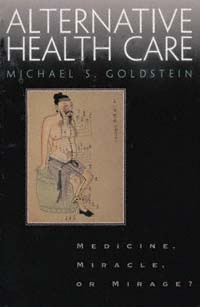William C. Olsen - African Medical Pluralism
Here you can read online William C. Olsen - African Medical Pluralism full text of the book (entire story) in english for free. Download pdf and epub, get meaning, cover and reviews about this ebook. year: 2017, publisher: Indiana University Press, genre: Romance novel. Description of the work, (preface) as well as reviews are available. Best literature library LitArk.com created for fans of good reading and offers a wide selection of genres:
Romance novel
Science fiction
Adventure
Detective
Science
History
Home and family
Prose
Art
Politics
Computer
Non-fiction
Religion
Business
Children
Humor
Choose a favorite category and find really read worthwhile books. Enjoy immersion in the world of imagination, feel the emotions of the characters or learn something new for yourself, make an fascinating discovery.

- Book:African Medical Pluralism
- Author:
- Publisher:Indiana University Press
- Genre:
- Year:2017
- Rating:3 / 5
- Favourites:Add to favourites
- Your mark:
- 60
- 1
- 2
- 3
- 4
- 5
African Medical Pluralism: summary, description and annotation
We offer to read an annotation, description, summary or preface (depends on what the author of the book "African Medical Pluralism" wrote himself). If you haven't found the necessary information about the book — write in the comments, we will try to find it.
African Medical Pluralism — read online for free the complete book (whole text) full work
Below is the text of the book, divided by pages. System saving the place of the last page read, allows you to conveniently read the book "African Medical Pluralism" online for free, without having to search again every time where you left off. Put a bookmark, and you can go to the page where you finished reading at any time.
Font size:
Interval:
Bookmark:
AFRICAN MEDICAL PLURALISM
PLURALISM
Edited by William C. Olsen and
Carolyn Sargent

This book is a publication of
Indiana University Press
Office of Scholarly Publishing
Herman B Wells Library 350
1320 East 10th Street
Bloomington, Indiana 47405 USA
iupress.indiana.edu
2017 by Indiana University Press
All rights reserved
No part of this book may be reproduced or utilized in any form or by any means, electronic or mechanical, including photocopying and recording, or by any information storage and retrieval system, without permission in writing from the publisher. The Association of American University Presses Resolution on Permissions constitutes the only exception to this prohibition.
The paper used in this publication meets the minimum requirements of the American National Standard for Information SciencesPermanence of Paper for Printed Library Materials, ANSI Z39.48-1992.
Manufactured in the United States of America
Library of Congress Cataloging-in-Publication Data
Names: Olsen, William C., editor, author. | Sargent, Carolyn F., 1947-editor, author.
Title: African medical pluralism / edited by William C. Olsen and Carolyn Sargent.
Description: Bloomington and Indianapolis : Indiana University Press, 2017. | Includes bibliographical references and index.
Identifiers: LCCN 2016045753 (print) | LCCN 2016046920 (ebook) | ISBN 9780253024770 (cloth : alk. paper) | ISBN 9780253024916 (pbk. : alk. paper) | ISBN 9780253025098 (e-book)
Subjects: LCSH: Integrative medicineAfrica, Sub-Saharan. | Medical careAfrica, Sub-Saharan. | Traditional medicineAfrica, Sub-Saharan. | Medical anthropologyAfrica, Sub-Saharan.
Classification: LCC R733 .A365 2017 (print) | LCC R733 (ebook) | DDC 615.0967dc23
LC record available at https://lccn.loc.gov/2016045753
1 2 3 4 5 22 21 20 19 18 17
In memory of Madam Ama Agyemang; 192?2015
Mother, Grandmother, Sister, Wife, Bonesetter, Midwife, Herbalist, part-time kmf
by William C. Olsen and Carolyn Sargent
by Arthur Kleinman
AFRICAN MEDICAL PLURALISM
William C. Olsen and Carolyn Sargent
HOW DO INDIVIDUALS and communities make sense of disease in contemporary Africa? What medical options arise in the pursuit of health care? Where multiple healthcare options exist, patients may draw upon a therapeutic continuum, consisting of diverse medical modalities. Varied options address the same symptoms; and they may be utilized simultaneously or sequentially. These alternatives for medical intervention are not necessarily seen as contradictory; nor are they mutually exclusive. Rather, therapeutic choices represent a spectrum of valid therapeutic interventions. For example, one fourteen-year-old patient suffering from epilepsy consulted a diviner in rural Ghana in 2002. The patients course of treatment had included repeated visits to a large urban hospital, use of pharmaceuticals prescribed by physicians, attendance at healing churches in Kumasi, self-medication, prayer camps, anointing with oil, and consultation with a diviner. His family accompanied the boy. They received direction from other sources, advising the family about alternative approaches to healing. The diviner declared that epilepsy was the result of malevolent forces sent to the boy by a group of men and women who had stayed in the boys home some months previously. The visiting women envied the health of the boy, and they were said to have brought about the disease through their malfeasance. Doctors and hospitals were utilized to treat epilepsy; but in this case, involving mystical causation, their abilities were considered practically useless. The diviner subsequently blocked the witchcraft. He prescribed herbal remedies for the symptoms, which the family administered. They combined the herbs with all recommended pharmaceuticals from the hospital. The childs symptoms consequently abated under this regimen.
As this case illustrates, sufferers and their kin draw on diverse healing modalities in search of working therapies. This volume presents scholarly approaches to the therapeutic continuum in sub-Saharan Africa. The continuum is a sliding scale of responses to diseasea spectrum ranging from biomedicine to various nonbiomedical personal and group choices. As we note in the case above, therapeutic choices are not mutually exclusive. In this volume, each author presents data gathered from onsite field locations to demonstrate how medical pluralism and medical knowledge are experienced and applied within various African settings. We address three broad objectives:
- to show that African populations seek medical recourse within a wide range of possible modes of therapy, including those found within local settings, as well as options such as biomedicine and Islamic healing, practices that are present due to centuries of historical contact
- to demonstrate that a course of action taken in medical treatment reflects local cultures as well as national and global power structures
- to use ethnography and descriptions of interpersonal dynamics to pursue these goals and also to apply them to broader concerns of global health. While theory helps to frame detail and data, we believe the biggest contribution of the volume is to document the ethnographic realities of suffering and therapy in everyday life.
African medical pluralism is the result of historic and contemporary developments. These include colonial-era efforts to eradicate and manage infectious diseases, the introduction of colonial hospitals and clinics, and Muslim healing traditions dating back centuries. Since independence, in the post-1950 decades, we see a continued and expanded reliance on biomedicine and contemporary medical missions, herbalists, ritual specialists, local midwives and bonesetters, evangelical healing, and spirit possession groups. Taken together, these modes of therapy present opportunities for sufferers to seek counsel in the search for health. This therapeutic continuum offers patients an array of interpretations of causation (microbes, breach of taboo, contagion, sorcery, spirit possession, etc.) and alternative treatments (biomedical pharmaceuticals, herbal preparations, divination, Koranic verses, scarification, surgery, and other modes of healing). The postcolonial legacy of medical knowledge, practices, and practitioners has shaped the structures and dynamics of the therapeutic continuum in evidence across the continent, in particular historical, political, and economic contexts. As noted over a generation ago, If we take individual patients as the focus of analysis, we realize that there is already considerable informal integration of scientific and traditional medical systems (MacCormack 1986, 156). This historical interchange has involved diviners referring serious patients to an emergency room and doctors suggesting stroke patients supplement their hypertension drugs with herbal remedies, as Olsen notes in this volume.
Medical pluralism is a concept widely associated with the writings of Charles Leslie (1975, 1976, 1980), which attracted considerable scholarly interest during the 1970s and 1980s, additional writings in the 1990s, and a recent revival of inquiry: (Alex et al. 2012, Chary and Rohloff 2015, Langwick 2015, Rhine et al). An exhaustive 116-page annotated bibliography on medical pluralism published in 2012 (Alex et al.) documents the extensive literature in this domain, from classical studies of the 1970s to very recent publications.
In his discussion of the constitution of medical systems, Leslie proposed that medical systems are pluralistic structures of different kinds of practitioners and institutional norms (1976, 99). Evoking the importance of historical and comparative research on medical systems, he notes that biomedicine, especially since World War II, has progressively subordinated but not supplanted other forms of practice. The preeminence of biomedicine is thought to be its prestige, its expert authority, and state legitimization and support. Yet ethnographic observations indicate the global presence of multiple medical traditions within particular societies. As Leslie suggests, the division of labor between different forms of medical practice is often an ongoing negotiated compromise, in which biomedicine and diverse local systems such as herbalism, ritual healing, midwifery, and multiple other alternatives, coexist as complementary and sometimes competitive options (1980, 191). Efforts by state and global health authorities to eliminate or restrict nonbiomedical practices, intended to generate local medical systems that are extensions of an internationally standardized system, have achieved partial success at best. From a global perspective, Leslie contends that medical pluralism is not a phenomenon of social enclaves but rather a feature of every medical system, even in the United States, where biomedicine has long been presumed to hold a monopoly on medical care (cf. Eisenberg 1993, 1998; Frankenberg and Leeson 1976; Janzen 1978; Kleinman 1980; Rubel 1979; Janzen and Feierman 1979).
Next pageFont size:
Interval:
Bookmark:
Similar books «African Medical Pluralism»
Look at similar books to African Medical Pluralism. We have selected literature similar in name and meaning in the hope of providing readers with more options to find new, interesting, not yet read works.
Discussion, reviews of the book African Medical Pluralism and just readers' own opinions. Leave your comments, write what you think about the work, its meaning or the main characters. Specify what exactly you liked and what you didn't like, and why you think so.

